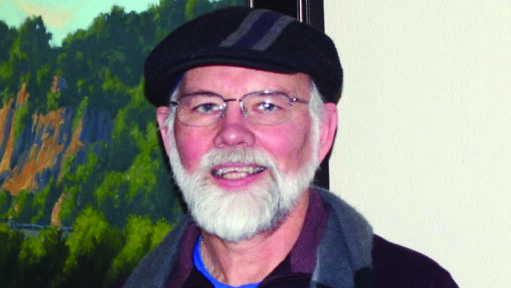Hidden culture that shapes our lives
Building Community
Tim Johnson – columnist
It was just a single finger. We raised it when someone passed by on the country road in front of our farm. The finger raised was the index finger rather than the middle finger more commonly put to use today. No one ever formally taught me to raise my index finger, but somehow, by the time I was in my early teens, I knew to raise that finger as a means of greeting someone I was passing by or who passed by me. Up goes the finger.
The finger raising was a part of rural Minnesota culture or at least the rural culture in which I grew up. All of us are shaped by the culture or cultures in which we live, often without conscious recognition. You raise your finger in greeting, even though no one ever officially told you that was what you were supposed to do. Sociologists define culture as “the values and beliefs, language, communication and practices that are shared in common by a group of people.” On the farm, it was common to have a neighbor or visiting relative suddenly drop in without so much as an invitation or phone call in advance. It was assumed coffee would be put on and some type of dessert would be forthcoming. No one saw anything wrong with this practice, because it was an accepted part of the culture.
If pressed, all of us could begin identifying cultural practices, norms, values and beliefs that we have absorbed without anyone ever formally telling us this is what they are. One such belief and practice that continues stirring up controversy is the gender roles of men and women. The accepted cultural practice when I was growing up was that women had very limited and specific roles. To the extent women had roles outside of the home, those roles were primarily confined to professions that involved nurturing; like teaching or nursing. Now, as the movie Barbie reminds us, the cultural practices around gender have been shifting for some time, leading us to a point where a once buxom doll can stand at the forefront of challenging patriarchy and the limitations culture has placed on women.
It is the hiddenness of cultural practices that often make them difficult to challenge when needing to be challenged, change when needing to be changed. One very dominant cultural practice that is particularly hard to address is the cultural practice of white supremacy. Just as I learned to raise a single finger in greeting, I also absorbed a generalized belief that Indigenous people were lazy and Black people were to be feared. No one ever taught me these things out loud. Yet, I absorbed them. It could have been because of the way Indigenous people and Blacks were often portrayed on television. Perhaps my negative view was shaped by being taught an American and Minnesota history that highlighted all the achievements of white leaders, primarily male, rarely if ever mentioning Indigenous, Black and People of Color. Perhaps it was the racist slang that I heard to describe populations other than the culturally dominant white bodied people.
The core of white supremacy culture is a deeply submerged belief that white people are superior to everyone else. This belief is continually reinforced by practices in things like housing or hiring, in communication like the telling of history from a dominant white perspective, in language and values like insisting western individualism is better than the communal practice of Indigenous people.
For most of our nation’s history, the culture of white supremacy has been hidden from the view of those of us who are white. Black, Indigenous and People of Color knew it existed, because they encounter it on a daily basis. But, for those of us who are white, we could go through life without ever questioning these particular beliefs, values and practices. I am glad that increasingly there are more and more people who are speaking out about the cultural practices of white supremacy which ultimately do a disservice to us all.
I still go back to my hometown and the farm on which I grew up. On occasion I will even raise an index finger in greeting to someone passing by. It is a cultural practice of my predominantly white neighbors that builds community, gives people a feeling of connection and one in which I am glad to share.
If you wish to explore how white supremacy culture influences the telling of history, consider attending this year’s Overcoming Racism Conference held at Metropolitan State University on November 10 & 11. The theme is “Reclaiming History and Paying What Is Due.” Registration opens on September 4. Go to overcomingracism.org/2023-orc.




